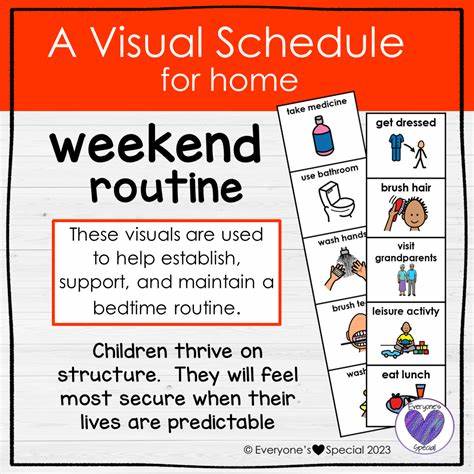Weekends are meant to be relaxing, but for children with ADHD, a completely unstructured Saturday or Sunday can quickly lead to boredom, impulsive behavior, and family frustration. With the right balance of flexibility and structure, you can create weekends that are both enjoyable and supportive for your child’s development.
Here’s how to plan a weekend that blends freedom, routine, and positive stimulation.
Why Weekends Can Be Difficult
Without the school day’s built-in structure, children with ADHD may:
- Feel restless or anxious
- Hyperfocus on screens or repetitive activities
- Skip meals or routines
- Struggle with transitions or emotional regulation
This isn’t misbehavior—it’s a natural response to lack of direction.
1. Create a “Flexible Weekend Routine”
Use a visual chart or checklist with loose time blocks that include:
- Free time (play, creativity, screen time)
- Structured activity (exercise, outing, family game)
- Light task (organizing toys, helping with lunch)
- Connection time (reading with a parent, conversation)
The key is rhythm, not rigid scheduling.
2. Mix Routine with Novelty
Include recurring weekend traditions (like Saturday morning walks or library visits) alongside spontaneous choices like crafts, baking, or building forts. This blend provides stability and fun.
3. Use Visual Checkpoints Instead of Exact Times
Rather than following the clock, offer a simple visual flow:
- “After breakfast → play time”
- “Before lunch → outdoor activity”
- “After dinner → quiet time”
This reduces pressure while keeping your child oriented.
4. Prioritize Physical Activity
Schedule active time early in the day:
- Walks, playgrounds, bike rides
- Dance parties at home
- Jumping, climbing, or mini fitness circuits
Movement helps regulate energy and improves mood.
5. Build in Quiet Reset Time
Include moments of rest that aren’t naps:
- Listening to an audiobook
- Coloring or building puzzles
- Lying down with soft music
Downtime is as important as stimulation.
6. Offer Simple Choices Throughout the Day
Use limited choices to give your child control:
- “Do you want to play outside or do a puzzle?”
- “Would you rather do art before or after lunch?”
Choice boosts cooperation and reduces resistance.
7. Use Gentle Rewards and Acknowledgments
Reinforce positive actions with verbal praise or fun privileges:
- “Thanks for helping clean up! You can pick our afternoon activity.”
- Use stickers or tokens to track helpful habits
Positive reinforcement keeps motivation high.
8. Make Mealtime Part of the Routine
Include your child in food planning:
- Let them pick the fruit or breakfast option
- Help prep simple meals or snacks
- Clean up together with music
Food routines bring calm and connection.
9. Limit Screen Time with Structure
Instead of banning screens, build healthy boundaries:
- Use time blocks (e.g., one hour in the morning, one in the evening)
- Break up screen sessions with outdoor or hands-on activities
This preserves balance and avoids battles.
10. Keep a Familiar Nighttime Routine
Stick to a bedtime rhythm even on weekends:
- Warm bath or shower
- Story time or audiobook
- Dim lights and calm environment
This consistency helps prevent sleep disruption and supports better Mondays.
Final Thought
Weekends don’t need to be over-scheduled or totally free—they need balance. With a gentle structure, fun routines, and room for rest and creativity, you can give your child the calm, connected, and enriching weekend their brain and body need.
Structure creates space for freedom. And freedom within structure helps your child grow.
